Disclosure: This article contains affiliate links. We may earn a commission from purchases at no extra cost to you, which helps our travel content.
Standing in the early morning light of Kandahar's central bazaar, the air thick with the scent of cardamom and woodsmoke, I found myself transported by sensory overload. Men in traditional turbans hustled past with carts of fresh pomegranates, their ruby interiors glistening like jewels. Women in vibrant headscarves bargained fiercely over saffron threads worth more than gold. This wasn't the Afghanistan portrayed in headlines—this was Afghanistan's beating heart, revealed through its ancient culinary traditions. As a diplomat with a passion for cultural immersion, I've navigated many complex regions, but few have offered such profound connections through food as Kandahar. This southern Afghan city, once the capital of the mighty Durrani Empire, holds culinary secrets that have survived centuries of turbulence. For those willing to venture beyond comfort zones, Kandahar's food heritage offers a window into Afghanistan's soul—one fragrant plate at a time.
Navigating Kandahar's Culinary Landscape
My diplomatic credentials granted me access to Kandahar during a rare period of relative stability, though I won't sugarcoat the realities—this remains a challenging destination requiring serious preparation and local connections. Before arriving, I spent months cultivating relationships with local community leaders and securing proper permissions through both official and informal channels.
Kandahar's food scene exists primarily in three spheres: the bustling public markets, the invitation-only realm of home cooking, and the handful of simple restaurants catering to locals rather than tourists. The central bazaar forms the city's culinary nucleus, where vendors have occupied the same spots for generations. Here, I met Abdullah, a third-generation spice merchant whose knowledge of regional variations in saffron would humble most food scientists.
'In Kandahar, we don't just cook food—we preserve our history,' he told me while measuring out fragrant cardamom pods. 'Each dish carries the story of who we are.'
To truly experience Kandahar's food culture, I recommend bringing a quality translation device. While I speak basic Pashto, having real-time translation capabilities opened conversations that would have otherwise remained closed, especially with female home cooks who rarely interact with foreigners but hold the keys to the most authentic recipes.

💡 Pro Tips
- Always ask permission before photographing food vendors or their goods
- Bring small denominations of local currency for market purchases
- Dress conservatively and respect local customs, especially as a female traveler
The Art of Kandahari Bread
If there's one food that defines daily life in Kandahar, it's naan—but not the flattened, often bland version familiar to Western diners. Kandahari naan is a revelation: massive, shield-shaped loaves baked in tandoor ovens sunk into the earth, their surfaces dimpled by skilled fingers and adorned with nigella seeds that release a subtle onion-like aroma when heated.
My quest to understand this staple led me to Haji Ghafoor's bakery, tucked away in a narrow alley near the Shrine of the Cloak. At 4:00 AM, while the city still slept, I joined his team of bakers as they mixed dough made with locally milled flour and water from a well believed to be over 300 years old.
'The water matters,' Haji explained through my translator as he demonstrated the rhythmic kneading technique. 'Kandahar water gives our bread its character.'
The tandoors—clay ovens heated by burning wood collected from the surrounding countryside—reached temperatures exceeding 700°F. I watched in amazement as bakers slapped the stretched dough against the inner walls with practiced precision, retrieving perfectly baked loaves minutes later using long metal hooks.
What makes Kandahari bread unique is not just the ingredients but the communal nature of its production and consumption. Families bring their own dough to neighborhood bakeries, where it's baked alongside others', creating an informal gathering space where news and stories are exchanged as freely as the bread itself.
For travelers attempting to document this process, I found my mirrorless camera indispensable for capturing the dramatic interplay of fire, smoke, and human movement in the dimly lit bakeries without disturbing the natural workflow.

💡 Pro Tips
- Visit bakeries between 4-6 AM to see the full bread-making process
- Always ask permission before entering a bakery's work area
- Bring a small gift (tea or sugar is appropriate) if you're planning to observe or photograph
The Pomegranate Trail: Kandahar's Ruby Treasure
Kandahar has been famous for its pomegranates since Alexander the Great first encountered them here in 329 BCE. Today, these crimson fruits remain central to both the local economy and cuisine, with Kandahari varieties prized throughout Asia for their perfect balance of sweetness and tartness.
During my fall visit—prime pomegranate season—I followed what locals call the 'Anar Masir' (Pomegranate Trail), connecting with farmers whose families have cultivated these orchards for centuries. The significance extends beyond simple agriculture; these fruits represent resilience, having survived decades of conflict that destroyed many other crops.
'When everything else failed us, the pomegranate trees remained,' explained Fatima, a rare female orchard manager whose family maintained their land throughout the Taliban era. 'Now we are teaching the younger generation to preserve these ancient varieties.'
Kandahar's cuisine incorporates pomegranates in countless ways. The fresh arils brighten salads and garnish rice dishes. Reduced pomegranate molasses (rob-e-anar) adds tangy complexity to stews. Even the dried seeds are ground into spice mixtures or brewed into medicinal teas.
My most memorable meal featured ashak (dumplings) topped with a sauce of yogurt, dried mint, and pomegranate kernels—the combination of creamy, herbal, and tart creating perfect harmony. The chef, noticing my enthusiasm, later showed me how they dry pomegranate seeds using traditional wooden racks positioned to catch mountain breezes.
For documenting these vibrant colors and intricate processes, I relied heavily on my compact travel journal, which allowed me to sketch processing techniques and jot down recipes while remaining unobtrusive. Unlike constant photography, which sometimes creates barriers, the simple act of handwriting observations often invited deeper conversations with the farmers and food producers I encountered.

💡 Pro Tips
- Visit between September-November for peak pomegranate season
- Ask permission before entering private orchards—a local guide can facilitate this
- Learn the phrase 'anar khoshmaza ast' (the pomegranate is delicious) to delight local vendors
Home Cooking: The Hidden Heart of Kandahari Cuisine
The true soul of Kandahar's culinary heritage isn't found in restaurants but behind the high walls of family compounds, where recipes pass from mother to daughter through practical apprenticeship rather than written instruction. As a female traveler with diplomatic connections, I was granted rare access to these domestic kitchens—a privilege I don't take lightly.
My most profound food experience came through an invitation to join the women of the Alizai family in preparing a traditional dastarkhan (spread of dishes) for a family celebration. From dawn until mid-afternoon, we worked in their outdoor summer kitchen, where three generations collaborated with minimal verbal instruction but perfect synchronization.
'In Afghanistan, we don't measure with cups or spoons,' laughed Bibi Gul, the 70-year-old matriarch, as she corrected my tentative attempts at shaping mantu dumplings. 'We measure with our eyes and hearts.'
The centerpiece of our meal was Kandahari shinwari kebab—chunks of lamb marinated in a paste of dried pomegranate, local herbs, and spices before being threaded onto metal skewers and grilled over glowing coals of saxaul wood. The meat emerged tender inside with a caramelized crust that captured the essence of open-fire cooking.
Equally impressive was the dopiaza—a slow-cooked onion and lamb stew with a complexity that belied its simple ingredients. The secret, I learned, was in the careful browning of onions in successive batches, each adding layers of flavor impossible to rush.
While cooking, the women shared stories of how these traditional techniques survived even during the most restrictive periods of recent history. When certain gatherings were forbidden, food preparation became one of the few approved spaces where women could gather, exchange information, and preserve cultural knowledge.
For capturing recipes and techniques without disrupting the natural flow of cooking, I found my waterproof notebook invaluable, allowing me to document measurements and methods even while helping to wash vegetables or knead dough near splashing water.

💡 Pro Tips
- Bring a small gift for the family if invited into a home (quality tea or sweets are appropriate)
- Offer to help with food preparation—it's the best way to learn techniques
- Remove shoes before entering indoor spaces and dress modestly
Sweet Endings: Kandahar's Confectionery Traditions
No exploration of Kandahar's food culture would be complete without delving into its renowned sweet traditions. The city's confectioners enjoy celebrity status, their skills elevating simple ingredients into creations that reflect both Persian influence and unique local innovations.
In the specialized section of the bazaar devoted to sweets, I met Master Noorullah, whose family has crafted confections for over 150 years. His tiny shop, barely larger than a walk-in closet, produces some of the most sought-after jalebi in southern Afghanistan—crispy, pretzel-shaped sweets fried in ghee and soaked in saffron syrup.
'My grandfather made jalebi for the last king of Afghanistan when he visited Kandahar,' Noorullah told me proudly as he demonstrated the precise wrist motion required to form perfect spirals in the hot oil. 'The technique cannot be rushed.'
Equally impressive were the varieties of halwa—not the dense, crumbly versions found elsewhere, but Kandahar's distinctive soft, translucent confections infused with cardamom, rosewater, and pistachios. The most prized variety, sher pira, combines milk, sugar, and wheat flour in a labor-intensive process that requires constant stirring for hours.
What struck me most was how these sweets transcend mere indulgence to become important social currency. Families in Kandahar maintain relationships through the ritualized exchange of homemade or carefully selected confections during holidays and life events. The quality and variety of sweets presented directly reflects the importance of the relationship.
During Eid celebrations, I witnessed elaborate trays of mixed confections being prepared as gifts, with specific assortments carrying subtle messages about the giver's regard for the recipient. This complex social language of sweets reveals how deeply food is woven into Kandahar's cultural fabric.
For travelers with a sweet tooth, I recommend bringing a small food scale if you're serious about recreating these recipes at home. When I finally convinced Master Noorullah to share his jalebi technique, the measurements were so precise that my rough estimations would have led to certain failure.

💡 Pro Tips
- Visit sweet shops in late afternoon when fresh batches are typically ready
- Sweets are often sold by weight—indicate how much you'd like using hand gestures
- Try firnee (milk pudding with cardamom) for a less sweet but authentic dessert experience
Final Thoughts
As my week in Kandahar drew to a close, I found myself standing once more in the early morning market, this time with different eyes. What had initially appeared as simply colorful food stalls now revealed themselves as living archives—each vendor, each technique, each recipe a thread in the complex tapestry of Afghan cultural resilience. In a region that has endured decades of upheaval, these culinary traditions provide continuity and identity when so much else has been disrupted. While Kandahar remains a challenging destination accessible primarily to those with professional connections or extensive travel experience, its food heritage offers profound insights for those seeking to understand Afghanistan beyond headlines. As I carefully packed a small bag of Kandahari saffron to carry home—its threads connecting me to this place long after departure—I reflected on Abdullah the spice merchant's words: 'We preserve our history through what we eat.' In Kandahar, I discovered that a shared meal can bridge divides that politics cannot. E kha de che raghley (It was good that you came).
✨ Key Takeaways
- Kandahar's cuisine reflects centuries of cultural resilience and preservation through conflict
- Food preparation serves as a crucial space for cultural transmission, particularly among women
- The region's signature ingredients—pomegranates, unique spice blends, and local grains—create distinctive flavors found nowhere else
- Building respectful relationships with local food producers offers the most authentic culinary experiences
📋 Practical Information
Best Time to Visit
September-November (fall harvest season)
Budget Estimate
$30-50 USD daily excluding accommodations
Recommended Duration
5-7 days minimum
Difficulty Level
Challenging (Requires Local Connections And Advance Planning)


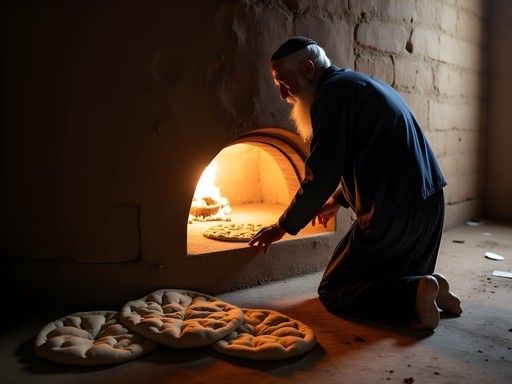
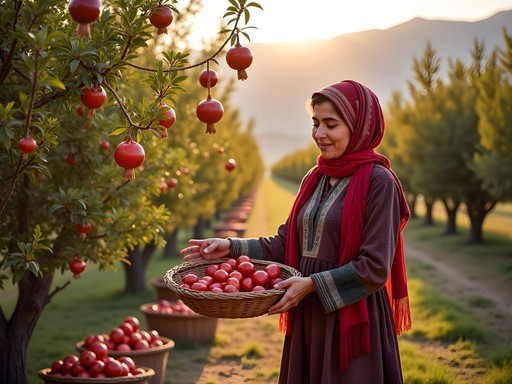

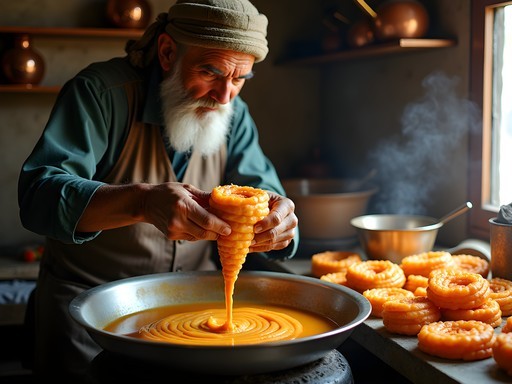



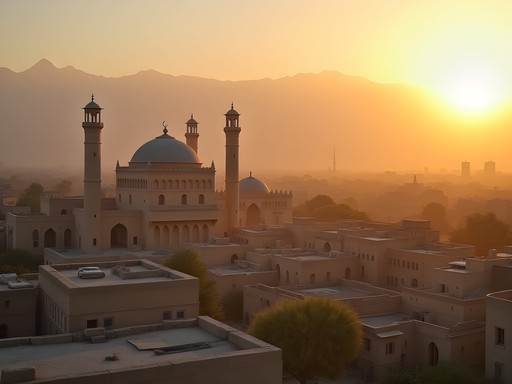




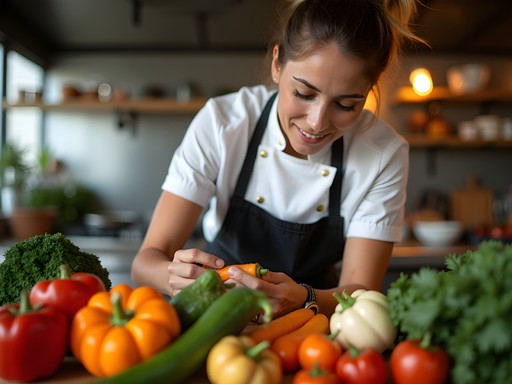

Comments
Megan Martin
This brought back so many memories of my time in Afghanistan! The bread section especially resonated - there's nothing like watching those skilled bakers slap dough onto the tandoor walls. I found that bringing a small phrase book helped immensely when navigating food markets. The hospitality in Afghan homes is unmatched - I was invited to three different family meals during my short stay. Did you get to try ashak? Those leek dumplings with yogurt sauce were my absolute favorite discovery!
redseeker
Those dumplings sound amazing! I've only had Afghan food once at a restaurant in Chicago. Definitely not the same as being there!
Megan Martin
Even restaurant versions can be good, but yes, nothing compares to the real thing! If you ever get the chance to try homemade Afghan food, don't pass it up!
redseeker
Amazing post! I've always wanted to try authentic Afghan food. How did you manage safety concerns while traveling in Kandahar? The pomegranate part sounds incredible.
Megan Martin
Not the author, but I visited Afghanistan for business last year. Security varies greatly by region. Kandahar requires careful planning - local contacts are essential. The food really is spectacular though - worth the extra preparation!
redseeker
Thanks for the insight! Did you try the pomegranates? They sound amazing.
Megan Martin
Yes! Kandahar pomegranates are incredible - juicier and more flavorful than any I've had elsewhere. They're considered the best in the world for good reason. I brought home some pomegranate molasses that I'm still rationing!
oceanstar
I'm fascinated by the bread-making you described. My grandmother used to make something similar (we're Iranian) and I've been trying to recreate it. Did you happen to get any recipes or specific techniques? Would love to try making authentic Kandahari bread at home!
Haley Hamilton
I did! Check the recipe section at the bottom of the post - I included a simplified version that works in a home oven. The key is getting the dough thin enough and having your oven as hot as possible. A pizza stone helps too!
oceanstar
Thank you! Can't believe I missed that. Going to try it this weekend!
blueguide
This looks amazing but I'm curious about safety in Kandahar? As a solo female traveler, would you recommend it? Were there any cultural considerations with food photography in the markets?
Haley Hamilton
Great questions! I traveled with a local guide which I'd absolutely recommend. For photography, I always asked permission first, especially with people. The food vendors were generally welcoming once they understood my interest was cultural. As for safety, it varies greatly by neighborhood and current conditions - thorough research and local connections are essential.
Douglas Bradley
Adding to Haley's point - the security situation can change rapidly. Always check your government's latest travel advisories and connect with other travelers who've been recently. Local fixers are absolutely essential.
blueguide
Thanks both! Maybe I'll start with Afghan restaurants in my city first 😊
islandlover
Those bread photos are making me hungry! Afghan food is so underrated.
Haley Hamilton
The bread was definitely one of the highlights! There's nothing like fresh naan straight from a tandoor oven.
Douglas Bradley
Haley, your piece on Kandahari cuisine brought back vivid memories of my time in northern Afghanistan years ago. The regional variations in Afghan food are fascinating - the way Kandahari cuisine differs from what I experienced in Mazar-i-Sharif shows how diverse the country's culinary traditions truly are. I particularly appreciated your section on the pomegranate traditions. Those ruby-red seeds are practically a cultural symbol! Did you get a chance to try any of the pomegranate-based meat stews? They're complex and absolutely worth seeking out. I found that carrying a small phrasebook helped immensely when trying to ask about specific dishes in more remote areas.
islandlover
Douglas, have you been to both northern and southern Afghanistan? I've only had Afghan food in restaurants abroad but would love to hear more about the regional differences!
Douglas Bradley
Yes! Northern Afghan cuisine tends to have more Central Asian influences - more noodle dishes and dumplings like mantu. Southern cooking around Kandahar has stronger Indian and Pakistani influences with more complex spicing. Both are incredible though!
greenfan
OMG those spice photos are GORGEOUS! 😍 The colors are unreal!
Sophia Gomez
I was in Kabul last year for work but never made it to Kandahar. The food differences between regions in Afghanistan are fascinating. In Kabul, the Uzbek influence is strong with so many pilaf variations. Your description of the Kandahari naan makes me wish I'd extended my trip! I found that sharing meals was where the most meaningful conversations happened. Did you notice how meals seem to dissolve cultural barriers? Even in business meetings, once we broke bread together, everything changed. Your post captures that beautiful aspect of Afghan hospitality so well.
coffeevibes
What was the coffee situation like there? I'm addicted to my morning cup and always curious about coffee cultures around the world!
Haley Hamilton
Tea is definitely king there! Green tea with cardamom was served everywhere. Coffee exists but it's not part of the traditional culture - when available it's usually instant coffee or very strong Turkish-style.
coffeevibes
Guess I'd better develop a taste for tea then! 😂
waveguide
Those bread photos are making me hungry! 🤤
Venture X
Premium card with 2X miles, $300 travel credit, Priority Pass